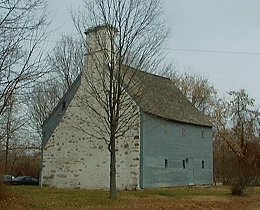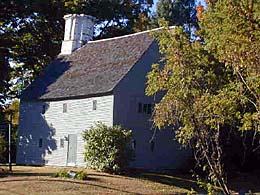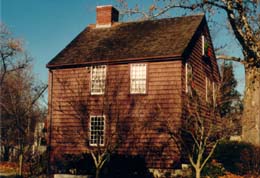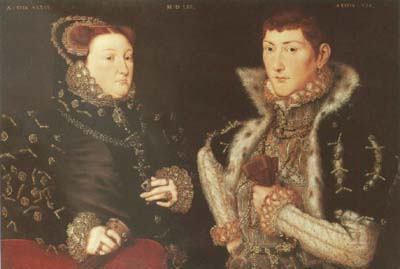Daughter Mary, Henry's only sibling, married Samuel Young in 1807, an up and coming lawyer and
politician in town, who was town supervisor and, in 1813, elected to the NY assembly.
John Gibson was active in the community, appearing
as a
Master of Chancery in 1813,
Justice of the Peace in 1814,
a member of the Bible Society of Saratoga County in 1815,
a Commissioner in 1817 for the placement of the new Court House, and
a Member of the New York Assembly in 1818.
On June 6, 1777, Lieut. Col. Bicker was promoted Colonel of the Second Pennsylvania Line Infantry, and
was in command of the regiment at the battles of Brandywine, Germantown and Whitemarsh, in which
it lost heavily, and at Valley Forge, where it was in the First Brigade.
He served throughout that long winter, helping to bring a ragged group of volunteers into a disciplined army,
retiring when his regiment was turned over for battle to Col. Walter Stewart.
His business interests were widely diverse, from trading beaver to having a tavern in 1647 on the west side
of Broadway, opposite the open space that later became Bowling Green. His naval interests ran to
owning a partial share in a privateer, captaining the sloop "Bedfort" between Albany and New Amsterdam, and
having a sloop trading with the Delaware community. As of 1675, he was still operating a sloop.
Martin Cregier was Captain of the New Amsterdam military, and resigned his position as Burgo-Master in 1663
to take a company after the Esopus Indians who had massacred the Kingston settlers, and recover captives.
He kept a detailed Journal of this expedition.
Lives of the Governors of PA
Some of Sarah Sherman's Ancestors
Parents
Watts Sherman (1775-1818) and Olivia Jillson (1779-1861)
 Sarah Sherman and Henry Bicker Gibson
Sarah Sherman and Henry Bicker Gibson
Watts Sherman. He came from Newport, R.I. His means were small, so that while he followed his trade -- and was but a botch at that -- his wife kept a small shop on Main street, where she sold cake and beer. He soon obtained the office of constable, and, as we are assured, manifested unusual zeal in the discharge of his duties, having, on one occasion, descended into a chimney in order to seize a silk dress which the party having it was determined he should not come at, and so debarred him other entrance into his house.
But it is likewise reported that at that period he was rather too prone to visit the tavern, and that his wife adopted the following means to cure the failing. One evening, after her work was done, she took her knitting and repaired to the tavern, where she sat down and assumed the air of being at ease. The embarrassment of the other parties present was soon relieved by the wife addressing her husband thus: "Mr. Sherman, I married you for the sake of your company, and I have come here to enjoy it." This visit sufficed to reform the ways of the wanderer; and he was ever after not only closely devoted to business, but a man of marked and examplary habits in respect to temperance. I retail the gossip as I have heard it; but whether true or not the incident is deemed sufficiently characteristic of Mrs. Sherman to have deserved to be so. This lady, whose maiden name was Olivia Jillson, was of excellent judgment, and a notably faithful consellor to her husband throughout his life.
In 1802 Mr. Sherman formed a partnership in trade with Arnold Wells, the latter furnishing the most of the capital. In this new sphere he evinced unusual capacity, for he was uncommonly shrewd and stirring. Being too ambitious for Mr. Wells, they separated, while Mr. Sherman enlarged his business and directly took rank among the leading merchants. With others, he bestirred himself in the creation of the first glass works of the county, the factory at Vernon, and was one of its directors. Under date of May, 1813, he informs the community that he has taken into partnership Henry B. Gibson and Alexander Seymour, under the name of Sherman, Gibson & Co. While the junior member remained in Utica, the two former established themselves in New York, where their skillful conduct of trade secured an independent fortune for each of them. Mr. Sherman died about the year 1820.
He was a tall, fine looking person, extremely neat of attire. Although close and sharp in business, he was, up to a certain standard, unexceptionally moral, and gave freely to objects of benevolence or public utility. His place of business, while in Utica, was on Genesee street, a little below the line of Broad, and afterward nearly opposite Catherine. For his residence he erected the house which was afterwards the home of General Joseph Kirkland, and is now that of Mrs. Susan Gridley.
His wife lived until her eighty-second year, and died in Albany, January 26, 1860. In all the relations of life she performed well her part and was deservedly esteemed. Her second husband was Paul Hochstrasser, and him she survived thirty years.
2nd Great Grandparents
Dr. Charles Higginbotham (1690-1782) and Mary Niles (1704-1784)
 Anna Higginbotham and Henry Sherman
Anna Higginbotham and Henry Sherman
 Captain Nathaniel Sherman and Lucy Tisdale
Captain Nathaniel Sherman and Lucy Tisdale
 Watts Sherman and Olivia Jillson
Watts Sherman and Olivia Jillson
 Sarah Sherman and Henry Bicker Gibson
Sarah Sherman and Henry Bicker Gibson
Dr. Charles Higinbotham, the earliest known ancestor of the branch of the family here under consideration, was born in England
in 1690, and came to this country from England in 1720, accompanied by a brother, name unknown, going first to the Barbadoes, where his brother purchased a plantation and remained there throughout his life, dying unmarried and intestate. His property, then valued at $100,000, was never claimed, as far as known, certainly not by the American branch of the family.
Dr Charles Higinbotham was a graduate of the Royal Academy of Physicians and Surgeons (of London?). He emigrated to the colony of Rhode Island in 1720 and lived there from that time until his death.
3rd Great Grandparents
Eleazer Arnold (1651-1722) + Eleanor Smith (1651-1722)
 Jeremiah Arnold and Freelove
Jeremiah Arnold and Freelove
 Sarah Arnold and Nathaniel Whipple, Jr.
Sarah Arnold and Nathaniel Whipple, Jr.
 Amy Whipple and James Jillson
Amy Whipple and James Jillson
 Olivia Jillson and Watts Sherman
Olivia Jillson and Watts Sherman
 Sarah Sherman and Henry Bicker Gibson
Sarah Sherman and Henry Bicker Gibson
Eleazer Arnold House:
487 Great Rd.Lincoln, RI 02865
(617) 227-3956
Tours on the hour Sun 1-4 pm, every second Sunday of the month, June 14-Oct 11. 723-5611. $2, children/elderly $1
http://www.spnea.org


4th Great Grandparents
Captain Edward Richmond (Abt.1631-Abt.1696) + Abigail Davis (Abt.1637-1682)
 Abigail Richmond and John Remington
Abigail Richmond and John Remington
 Martha Remington and Eber Sherman
Martha Remington and Eber Sherman
 Henry Sherman and Anna Higginbotham
Henry Sherman and Anna Higginbotham
 Captain Nathaniel Sherman and Lucy Tisdale
Captain Nathaniel Sherman and Lucy Tisdale
 Watts Sherman and Olivia Jillson
Watts Sherman and Olivia Jillson
 Sarah Sherman and Henry Bicker Gibson
Sarah Sherman and Henry Bicker Gibson
Edward Richmond and 47 others were granted 5000 acres to be called East Greenwich.
He was Attorney General 1677-80. ! Born about 1632 before John came to New England.
They spent a few years at Taunton and when he was about 10 years old, his father moved to Newport and
built a Mansion House on the Mill Brook. ! At 24 he was engaged to be married to Abigail Davis.
The bans were published twice, however, she was taken by her mother and step father and given to
Richard Ussell. Edward is first mentioned in a suit he brought against Richard Ussell on June 24, 1656
to recover Abigail. He also brought a suit against her step father and mother, James and Joan Davis.
Edward was finally successful in his lawsuit and, eventually, Abigail became his wife. But Edward Richmond had a
long memory of the hurt he has sustained at the hands of Abigail's mother.
Newport Court Book A, p.15
At the Generall Court of Tryalls Held in his Maj Name
at Newport
the 23 of October Ann 1672.
Upon An Indictment by the General Solicetor against Joan Cowdall Widdow [previously Joan Davis], for liveinge and Lodginge with John Dean and other breaches of the peace; she beinge in Court Cald appeard, Enters Travers pleads not Guilty and Referrs her Tryall to God and the cuntry; The Jurris Verdict Wee finde Guilty of Lyinge in bed with John Deane, and nott Guilty of breach of peace:
The Courts Centance the said Joan Cowdall shall forthwith be brought to the great gunn and there stript to the midle and bound and so stand for the fourth part of an houres time, and that she alsoe pay ffees.
Upon and Indictment by the Genrl Solicetor against Joan Cowdall for committinge Adultery with John Page an Irishman: she beinge Mandamassed and in Court Cald, appeard. Enters Traverce, pleads not Guilty, and Referrs her selfe for Tryall to God, and the Cuntry.
The Jurrys Verdict (Not Guilty) whereupon she is cleerd by proclamation in Court payinge ffees.
4th Great Grandparents
Peter Folger (1607-1690) and Mary Morell (Abt.1621-1704)
Grandparents of Ben Franklin!
 Joanna Folger and Deacon John Coleman
Joanna Folger and Deacon John Coleman
 Abigail Coleman and James Tisdale
Abigail Coleman and James Tisdale
 William H. Tisdale and Lucy Hammond
William H. Tisdale and Lucy Hammond
 Lucy Tisdale and Captain Nathaniel Sherman
Lucy Tisdale and Captain Nathaniel Sherman
 Watts Sherman and Olivia Jillson
Watts Sherman and Olivia Jillson
 Sarah Sherman and Henry Bicker Gibson
Sarah Sherman and Henry Bicker Gibson
In the year 1644, Peter Folger married Mary Morrell, who had been an inmate in Hugh Peters's family. He resided at Martha's Vineyard till 1663, when he removed to Nantucket, being among the first settlers of that Island. He was a man of considerable learning, particularly in mathematical science, and he practised surveying both in the Vineyard and Nantucket. He was one of the five commissioners first appointed to measure and lay out the land on the Island of Nantucket; and it was said in the order, that "whatsoever shall be done by them or any three of them, Peter Folger being one, shall be accounted legal and valid." This mode of wording the order shows the confidence that was placed in his integrity and judgment.
He acquired the Indian language, and served as interpreter, both in affairs of business, and in communicating religious instruction to the Indians. He rendered assistance in this way to the Reverend Thomas Mayhew, the distinguished missionary at Martha's Vineyard. Mr. Prince, in his account of Mayhew, says, that be had "an able and godly Englishman, named Peter Foulger, employed in teaching the youth in reading, writing, and the principles of religion by catechizing; being well learned likewise in the Scriptures, and capable of helping them in religious matters."× He is said to have preached on some occasions. There is a long letter from him to his son-in-law, Joseph Pratt, containing religious counsel, with much use of Scripture, according to the practice of those times. Indeed his poem, entitled
A Looking-Glass for the Times, published in 1676, shows that he was not only well informed in theology, but in political affairs, such as they then were in New England.
4th Great Grandparents
Captain Nathaniel Niles (1642-1727) and Sarah Sands (-Abt.1726)
 Nathaniel Niles and Mary Hannah
Nathaniel Niles and Mary Hannah
 Mary Niles and Dr. Charles Higginbotham
Mary Niles and Dr. Charles Higginbotham
 Anna Higginbotham and Henry Sherman
Anna Higginbotham and Henry Sherman
 Captain Nathaniel Sherman and Lucy Tisdale
Captain Nathaniel Sherman and Lucy Tisdale
 Watts Sherman and Olivia Jillson
Watts Sherman and Olivia Jillson
 Sarah Sherman and Henry Bicker Gibson
Sarah Sherman and Henry Bicker Gibson
Captain Nathaniel Niles was a Captain of Militia in King
Phillips war, Justice of Peace, Grand Juror 1687, member of the Rhode
Island Assembly 1705. Owned plantations at South Kingston and on Block
Island. By deeds and Will, he distributed his large estate to his children.
4th Great Grandparents
John Tisdale, Sr. (1614-1675) and Sarah Walker (1619-1676)
 James Tisdale and Mary Avery
James Tisdale and Mary Avery
 James Tisdale and Abigail Coleman
James Tisdale and Abigail Coleman
 William H. Tisdale and Lucy Hammond
William H. Tisdale and Lucy Hammond
 Lucy Tisdale and Captain Nathaniel Sherman
Lucy Tisdale and Captain Nathaniel Sherman
 Watts Sherman and Olivia Jillson
Watts Sherman and Olivia Jillson
 Sarah Sherman and Henry Bicker Gibson
Sarah Sherman and Henry Bicker Gibson
John Tisdale was settled at Duxbury MA as early as 1637, where he was Constable in 1646 and where he had received several grants of land which he sold to William Brett in 1657, and then removed to Taunton MA. He was a member of the Grand Inquest of Plymouth Colony in 1647, 1650, and in 1671, and in 1673-4-5, was one of the Selectmen of Taunton. In 1674 he represented that town in the General Court of the Colony. On 27 Jun 1675, Taunton was attacked by a band of King Philip's Indians during which Mr. Tisdale was killed, and his house burned. His wife Sarah died the following December. Letters of Administration on his estate were granted by the General Court 1 Nov 1676, to his sons John, James, Joshua and Joseph. John Tisdale was one of the 26 Freeman who purchased Freetown of the Indians in April 1659 and one of the founders of the Taunton Ironworks.
5th Great Grandparents
Captain James Sands (1622-1695) and Sarah Walker (-1709)
 Sarah Sands and Captain Nathaniel Niles
Sarah Sands and Captain Nathaniel Niles
 Nathaniel Niles and Mary Hannah
Nathaniel Niles and Mary Hannah
 Mary Niles and Dr. Charles Higginbotham
Mary Niles and Dr. Charles Higginbotham
 Anna Higginbotham and Henry Sherman
Anna Higginbotham and Henry Sherman
 Captain Nathaniel Sherman and Lucy Tisdale
Captain Nathaniel Sherman and Lucy Tisdale
 Watts Sherman and Olivia Jillson
Watts Sherman and Olivia Jillson
 Sarah Sherman and Henry Bicker Gibson
Sarah Sherman and Henry Bicker Gibson
Sarah Walker Sands, daughter of John and Katherine Walker, married "Captain" James Sands in 1651 in Portsmouth, Mass. James was born in Reading, Berkshire, England and was listed as being in Boston in1633. He was listed as a Freeman in 1655 and was named Representative to the General Court of Commissioners at Newport, May 19, 1657. About1660, he and Sarah left Taunton, Mass and bought 1/16 of Block Island, RI. They owned lots #12,14, and 15. James held leadership roles in getting the island incorporated and gave it the name "New Shoreham," which apparently didn't catch on.
James and Sarah built a large stone house with a mill on a mill pond. I believe this was a woolen mill as several ancestors owned woolen mills. They were attacked in "Philip's War," by French Privateers coming into the bay. Rev. Samuel Niles, their grandson, tells how they all ran to the woods until the English came and subdued the French. They were also attacked by Indians, and the house was heavily garrisoned.
Sarah had 6 children between about 1658 and 1672: John, Samuel, Sarah, Mercy, Edward, and James. She served as the island's "surgeon," although she apparently did not have training. She ministered to the needs of all on the island and her home served as a church, hospital, and was a haven for any stranger. Although she had at least 4 black indentured servants, they apparently were happy and named their children with some of the same names as her children. She specified that they were to be freed, at specific times, in her will.
Sarah's children were prosperus and involved in the resistance during the Revolution. James and Sarah both died and are buried on Block Island
5th Great Grandparents
Joseph Langton (1620-1661) and Rachel Varney (1632-1707) [+ William Vinson]
 Rachel Langton and Hugh Rowe
Rachel Langton and Hugh Rowe
 Ruth Rowe and Nathaniel Day
Ruth Rowe and Nathaniel Day
 Benjamin Day and Mary Robinson
Benjamin Day and Mary Robinson
 Mary Day and James Jillson
Mary Day and James Jillson
 James Jillson and Amy Whipple
James Jillson and Amy Whipple
 Olivia Jillson and Watts Sherman
Olivia Jillson and Watts Sherman
 Sarah Sherman and Henry Bicker Gibson
Sarah Sherman and Henry Bicker Gibson
On September 3, 1692, three Salem magistrates signed a warrant for the
Constable of Gloucester to apprehend and "seize the bodies" of Margaret
Prince, Hugh Rowe's mother-in-law, and Elizabeth Austin Dicer. They had been
formally complained of by 24-year-old Ebenezer Babson of Gloucester, who
complained that he and his mother "were beset almost every night by
skulkers". "They have grieviously hurt and tortured Elinor Babson, widow,
and Mary Sargent, wife of William Sargent of Gloucester" by witchcraft. On
September 5, 1692, the two women were seized and taken to Salem.
There is evidence that three more Gloucester women were charged and confined
to jail in Ipswich, but were released on bond September 24, 1692. One of
these women was Mary (Prince) Rowe, 34, the second wife of Hugh Rowe, and the
daughter of Margaret Prince, who had been arrested previously on September 3.
The second woman accused was Phebe Day, 39, whose three brothers were
married to Hugh's three daughters. The third woman, Rachel Vinson, was the
second wife of William Vinson, and the mother of Rachel Langdon, Hugh's first
wife. If, as claimed, the three women were freed on bail, they were
subsequently hauled off to Ipswich prison again, for all three "were
shivering there in December, and their cry for clemency survives in the
written records".
Another three women were arrested for witchcraft on October 30, 1692: Esther
Elwell (who would become Mary Rowe's sister-in-law), Rebecca Dike and Abigail
Rowe, Hugh's daughter, who was not yet 15 years old. They were accused of
perpetrating witchcraft on Mary Fitch of Gloucester "into the wasting, pining
and consuming of her body". The fates were against Hugh's daughter Abigail;
her mother was Mary (Prince) Rowe and her grandmother was Margaret Prince,
both already in prison for witchcraft. All the "witches" were eventually
released and did not stand trial; the date of their release is not known.
5th Great Grandparents
John Woodcock (Abt.1615-1701) + Sarah Curtis (-1676)
 Israel Woodcock and Elizabeth Gatchell
Israel Woodcock and Elizabeth Gatchell
 Bethiah Woodcok and John Slack
Bethiah Woodcok and John Slack
 Bethiah Slack and Nathaniel Whipple
Bethiah Slack and Nathaniel Whipple
 Nathaniel Whipple, Jr. and Sarah Arnold
Nathaniel Whipple, Jr. and Sarah Arnold
 Amy Whipple and James Jillson
Amy Whipple and James Jillson
 Olivia Jillson and Watts Sherman
Olivia Jillson and Watts Sherman
 Sarah Sherman and Henry Bicker Gibson
Sarah Sherman and Henry Bicker Gibson
The first settler in what is now Attleboro
territory was John Woodcock, who built a public house on the old Bay road in North
Attleboro. He had a farm of three hundred acres on Ten Mile River. He began his house
in 1669 and was licensed in the following year "to keep an ordinary" and enjoined "to
keep good order, that no unruliness or ribaldry be permitted there." His house was
one of several garrisons built for the protection of the people from the Indians in case
of need. There were such garrison houses in Dedham, Seekonk, Swansea and other
places. A portion of Woodcock's still stands at North Attleboro. In 1806 the house was
mainly supplanted by a large three-story building. Woodcock's son was killed by the
Indians during King Philip's war in April, 1676. The Indians had attacked the
garrison, but the son, Nathaniel, was at work in a corn field with others when the
party was fired upon. The workmen fled. The Indians cut off Nathaniel's head and
stuck it on a pole and set it up in front of the house. From this time Woodcock was an
implacable enemy, killing an Indian wherever he found one. The son was buried where
he fell, and the land today is reserved for a cemetery, with his grave in the centre. The
place is now being cleared up, and those engaged in the work have found a stone in
the centre, which from its age and position is supposed to be that of Nathaniel
Woodcock. Woodcock sold the farm in 1694 to John Devotion for L390. The latter
occupied it until 1711 when he


8th Great Grandparent
Sir George Gregory Fienes, Baron Dacre (Abt.1538-1594)
 Mary K. Fienes [illegitimate] and Captain Frank John Wheatleigh
Mary K. Fienes [illegitimate] and Captain Frank John Wheatleigh
 Dorothy Wheatleigh and Thomas Bliss
Dorothy Wheatleigh and Thomas Bliss
 Elizabeth Bliss and Thomas Wilmarth
Elizabeth Bliss and Thomas Wilmarth
 Ensign Thomas Wilmarth and Mary Robinson
Ensign Thomas Wilmarth and Mary Robinson
 Mary Wilmarth and Israel Whipple
Mary Wilmarth and Israel Whipple
 Nathaniel Whipple and Bethiah Slack
Nathaniel Whipple and Bethiah Slack
 Nathaniel Whipple, Jr. and Sarah Arnold
Nathaniel Whipple, Jr. and Sarah Arnold
 Amy Whipple and James Jillson
Amy Whipple and James Jillson
 Olivia Jillson and Watts Sherman
Olivia Jillson and Watts Sherman
 Sarah Sherman and Henry Bicker Gibson
Sarah Sherman and Henry Bicker Gibson

Mary Neville and son George Gregory
Mary Neville, the wife of Thomas Fiennes, 3rd Baron Dacre of the South, and mother of three year old Gregory, was in a bad situation when Thomas was executed in 1541
for the murder of a groundskeeper during a youthful poaching expedition to hunt deer. Her plight
must have touched someone, because Parliament voted her a dower out of her late husband's estate.
Gregory
was married very young to Anne de Sackville. When Elizabeth came to the
Throne, she restored all lands, titles and honours to Gregory in the first
session of Parliament in 1558. Anne, as Lady Dacre, served Elizabeth faithfully
all her life, alongside Winifred, as a Lady of the Bedchamber.
Gregory was known
to be "crack-brained", though Anne seemed to be utterly devoted to him and it
appears that this was a rare love match. Gregory died in Sep of 1594 and Anne
followed him in May of 1595. Anne and Gregory had only one child, a girl,
Elizabeth, who died of an unknown disease sometime after 1565. The young
Elizabeth is interred on the same tomb of her father in Chelsea Old Church,
Chelsea, England.
Gregory had a bastard daughter was named Mary in about 1571. Apparently Anne wanted nothing to
do with her since there is no mention of the daughter, who lived to marry
someone named Wheatley, since the tomb heraldry says nothing of her.




 Copyright © 2003, Mary S. Van Deusen
Copyright © 2003, Mary S. Van Deusen